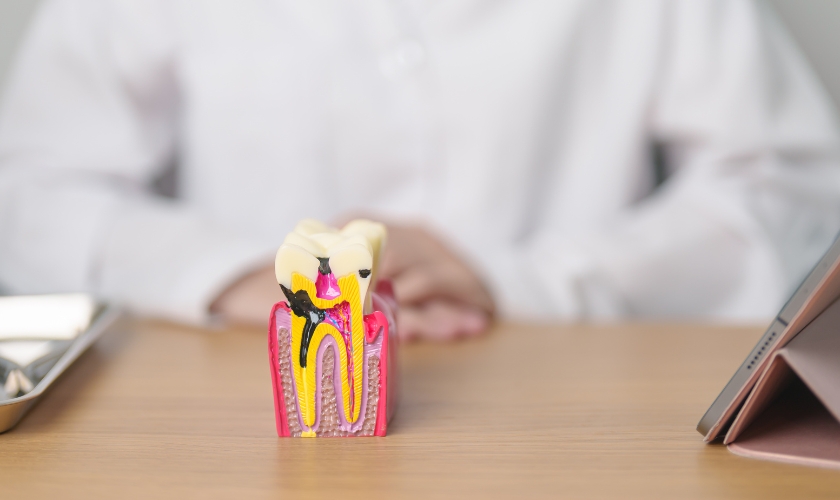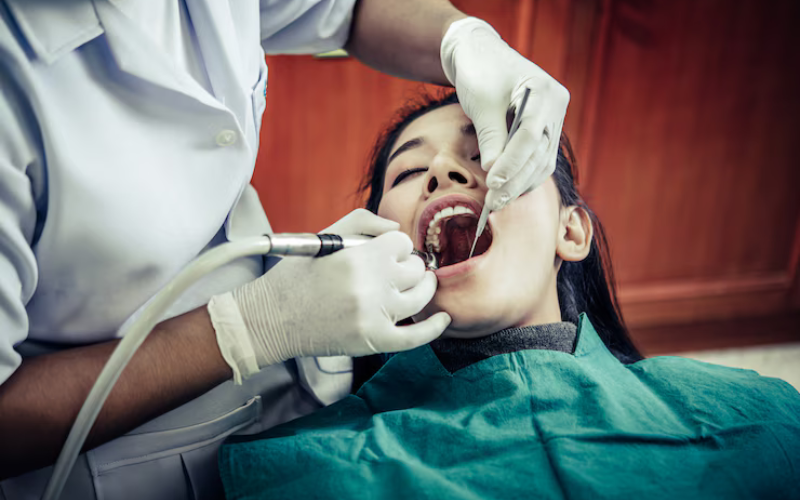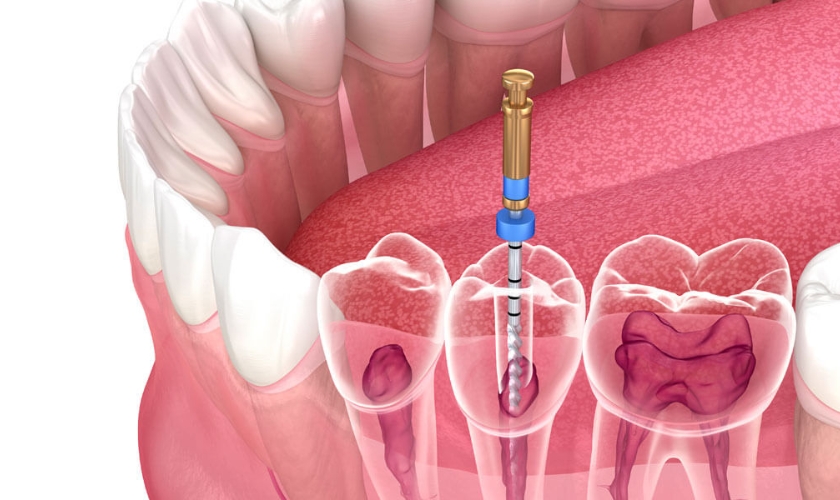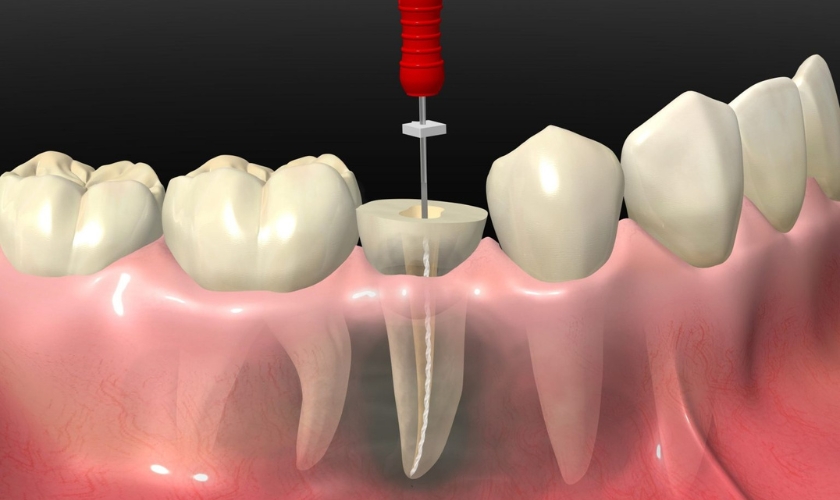
By Gentle Touch Dentistry Richardson
A root canal treatment is a dental procedure that removes infected pulp from the inside of a tooth. While the procedure itself addresses the infection, proper aftercare is crucial for minimizing discomfort, ensuring a smooth healing process, and preventing complications.
Here’s a breakdown of why aftercare is important:
- Reduced Pain and Discomfort: Following aftercare tips can help manage post-procedural soreness and inflammation.
- Faster Healing: By creating an optimal healing environment, you can promote tissue regeneration and recovery.
- Prevent Complications: Proper care minimizes the risk of infection and other potential issues that could arise.
The exact recovery timeline for a root canal can vary depending on the severity of the infection and your individual healing process. However, most people experience significant improvement within a few days, with complete healing taking one to two weeks.
Minimizing Pain and Discomfort After a Root Canal
Following a root canal, it’s normal to experience some soreness and discomfort around the treated tooth. Here are some tips to help minimize pain and promote healing:
A. Medication
- Over-the-counter pain relievers: Medications like ibuprofen or acetaminophen can effectively manage mild to moderate pain. Follow the recommended dosage instructions on the label and consult your Richardson dentist if the pain persists.
- Prescription pain medication: In some cases, your dentist in Richardson, TX, may prescribe stronger pain medication for more severe discomfort. Take these medications exactly as prescribed and never exceed the recommended dosage.
B. Managing Swelling
Swelling is a common side effect after a root canal. Here’s how to manage it:
- Applying a cold compress: Apply a cold compress to the outside of your cheek near the treated tooth for 20 minutes at a time, followed by a 20-minute break. Repeat this cycle for the first few hours after your procedure.
- Sleeping with head elevated: Prop yourself up with extra pillows while sleeping to help reduce swelling and promote drainage.
C. Dietary Tips for Root Canal Recovery
Since your mouth will be tender after a root canal, it’s important to adjust your diet to promote healing and prevent irritation. Here’s what to focus on:
- Examples of soft foods: Opt for soft, easily chewable foods like yogurt, applesauce, mashed potatoes, soups, and cooked vegetables.
- Avoid hard, chewy, or crunchy foods: Stay away from hard foods like nuts, raw vegetables, chips, and tough meats that can put pressure on the treated tooth and cause discomfort.
- Maintaining hydration: Drink plenty of water throughout the day to stay hydrated and aid healing.
D. Oral Hygiene After a Root Canal
Maintaining good oral hygiene is essential after a root canal to prevent infection and promote healing. Here are some tips:
- Brushing gently around the treated tooth: Brush your teeth twice a day with a soft-bristled toothbrush. Be gentle around the treated tooth to avoid irritation.
- Flossing carefully to avoid irritation: Flossing is important to remove plaque and bacteria, but be cautious around the treated tooth. Use a gentle flossing technique and avoid snapping the floss near the tooth.
- Using a mouthwash recommended by the dentist: Ask your Richardson dentist about using a chlorhexidine mouthwash to help reduce bacteria in your mouth.
Potential Complications After Root Canal Treatment
While root canal treatment in Richardson, TX, is a successful procedure for saving teeth, there’s a slight chance of complications. Here’s what to watch out for:
Signs and symptoms of complications:
- Increased pain and swelling that worsens instead of improving
- Persistent throbbing or pulsing sensation
- Fever or chills
- Difficulty breathing or swallowing
- Drainage from the treated tooth
- Loosening or chipping of the treated tooth
What to do if you experience complications:
If you experience any of the above signs or symptoms, contact your dentist in Richardson, TX, immediately. Early intervention is crucial to address any potential issues and ensure a successful outcome. Don’t wait for symptoms to worsen before seeking professional help.
Returning to Normal Activities After a Root Canal
Following a root canal, it’s important to listen to your body and gradually resume your normal activities. Here are some tips for a smooth transition:
- Gradually resuming normal activities: Don’t try to do too much too soon. Take it easy for the first few days after your procedure, and gradually increase your activity level as you feel comfortable.
- Avoiding strenuous exercise for a few days: Strenuous exercise can increase blood flow and potentially worsen discomfort. Avoid strenuous activities for a few days after your root canal and gradually resume your exercise routine as you feel better.
- When to return to work or school: Generally, you can return to work or school within 1-2 days after a root canal, depending on your individual situation and comfort level. If your job requires strenuous activity, it may be best to discuss a modified schedule with your employer for the first day or two.
Follow-Up Appointment After Root Canal
A follow-up appointment with your nearest dentist in Richardson is crucial after a root canal to ensure proper healing and complete the restoration process. Here’s why this appointment is important:
Importance of attending follow-up appointment:
- Your nearby dentist will assess your healing progress and ensure the infection is completely resolved.
- Depending on the specific situation, you may need a permanent crown placed on the treated tooth to restore full functionality and aesthetics.
- The follow-up appointment allows your dentist to address any lingering concerns you may have about the procedure or recovery process.
What to expect during the follow-up appointment:
- Your dentist will examine the treated tooth and surrounding tissues.
- X-rays may be taken to evaluate healing and ensure the root canal was successful.
- If a permanent crown is needed, impressions will likely be taken during this visit to create a custom-made restoration. The crown placement will typically occur in a separate appointment.
Tips for Preventing the Need for Future Root Canals
While root canals are a successful treatment for saving teeth, preventing the need for them in the first place is ideal. Here are some key strategies for maintaining good oral health and reducing your risk of future root canals:
- Maintaining good oral hygiene: Brushing your teeth twice a day with fluoride toothpaste and flossing daily are essential for removing plaque and bacteria that can contribute to tooth decay and infection.
- Identifying and treating cavities early: Regular dental checkups and cleanings allow your dentist near Richardson to detect cavities in their early stages. Early intervention through fillings can prevent the need for more extensive procedures like root canals.
- Wearing a mouthguard during sports activities: If you participate in contact sports or activities with a high risk of mouth injury, wearing a mouthguard can help protect your teeth from fractures and cracks that could necessitate root canal treatment in Richardson, TX.
Frequently Asked Questions
How long will I be sore after a root canal?
Most people experience soreness for a few days after the procedure, with significant improvement within a week.
Can I eat right after a root canal?
It’s best to wait a few hours before eating anything and then stick to soft foods until the numbness wears off completely.
Can I drink alcohol after a root canal?
Alcohol can irritate the treated area and slow healing. It’s best to avoid alcohol for the first 24 hours after your procedure.






